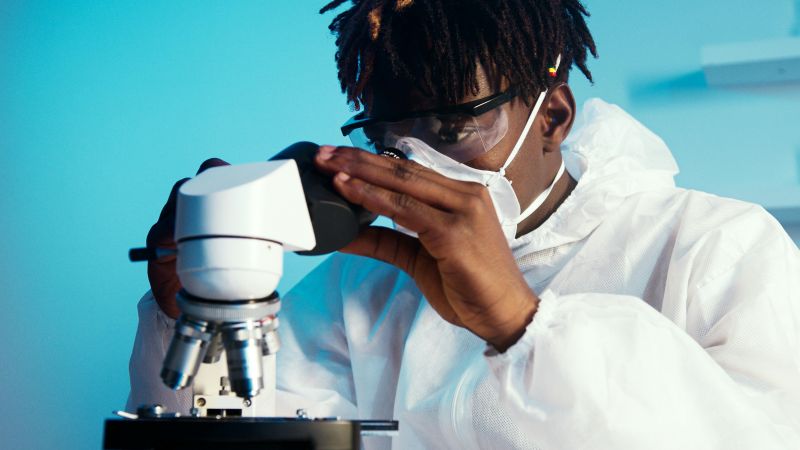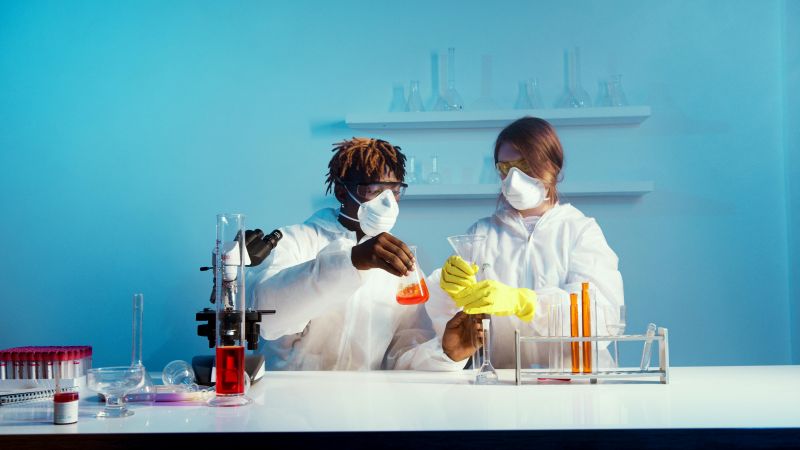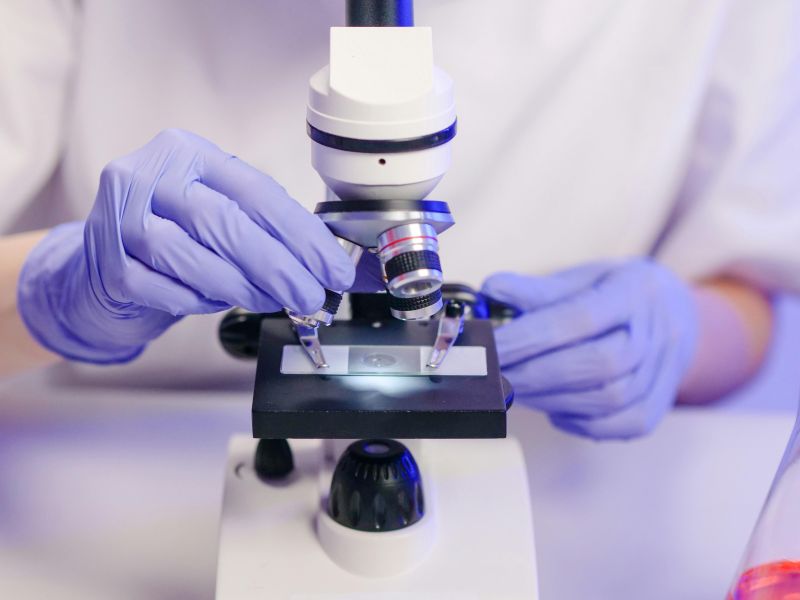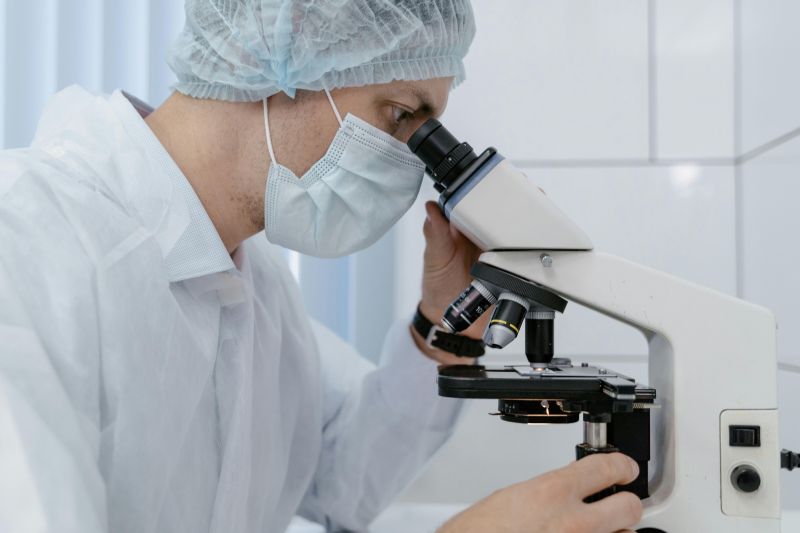Ever wondered what is health in science and why it matters so much in our daily lives? I used to think “health” was just about not being sick—but science opened my eyes to a bigger picture. From how our bodies fight off a cold to how communities stay safe during flu season, health in science is all about understanding and improving life with facts, not guesswork.
Whether you’re curious about how hospitals like Hamilton Health Sciences operate or what students learn at Cabarrus College of Health Sciences, you’re already dipping your toes into the world of health science. In this guide, we’ll explore what this field really includes, how it touches our lives, and where to learn more—from Health Science Reports to universities like Rajiv Gandhi University of Health Sciences.
Stick around—I’ll break it all down in plain, everyday language. No jargon. Just the stuff you need to know, like a friend explaining it over a cup of tea. Let’s get into it!

Breaking It Down: What Is Health in Science?
Let’s keep it simple—health in science is about more than just avoiding the flu. It’s about understanding the body, the mind, and even how we connect with others. When scientists talk about health, they look at it from all angles: physical strength, mental peace, and social well-being. It’s like putting together pieces of a puzzle to see the full picture of a healthy life.
Think about biology classes at places like Cabarrus College of Health Sciences or the work done at Rajiv Gandhi University of Health Sciences—they’re not just teaching facts. They’re showing how cells, organs, and systems all play their part in keeping us alive and well. Public health experts, like those at Hamilton Health Sciences, use this knowledge to protect entire communities.
Here’s a simple example. When you wash your hands to avoid getting sick, that’s science in action. When vaccines are created to stop the spread of disease, that’s years of health in science research at work. Even fitness apps that count your steps? Yep, they’re built on scientific studies of how movement affects the body.
So next time you wonder what is health in science, just remember—it’s the bridge between what we feel and what we know. It’s how we turn research into real change, from hospitals to home kitchens. And honestly? It’s one of the most practical ways science shows up in our everyday lives.
What Does Health Science Include?
So, what does health science include—really? To me, it’s like opening a treasure chest of tools that help people live better, longer, and smarter. Health science isn’t just about doctors in labs or hospitals like Hamilton Health Sciences (though they’re a huge part!). It’s everything from how we eat to how we breathe, move, and even think.
Let me explain it the way I first understood it. When I visited a local clinic for a simple nutrition check, the nurse explained how food affects our energy, mood, and sleep. That was my first real brush with science in health science. It wasn’t just “eat your veggies”—she talked about how vitamins work on a cellular level. That’s health science: using biology to guide everyday choices.
Health science includes a bunch of fascinating fields:
- Nutrition – what fuels our bodies and keeps our immune systems strong.
- Anatomy – the structure of our bodies, like the blueprint behind how we function.
- Healthcare – the systems that keep us cared for, from hospitals to home care.
- Public health – keeping entire communities safe from things like flu outbreaks.
- Medical research – discovering better ways to treat or prevent illness.
Places like Cabarrus College of Health Sciences and Carolinas College of Health Sciences help students dive into these areas with real-world training. Over in India, Rajiv Gandhi University of Health Sciences is known for turning theory into practice for thousands of future doctors and researchers. They’re not just teaching; they’re shaping the future of health in science.
Want a fun example? Think about your fitness tracker. It counts your steps, checks your heart rate, and maybe even reminds you to drink water. That’s not just tech—it’s built on years of health science reports and studies that show how movement affects heart health and stress levels. The science makes the gadget smart.

Why Health Science Matters in Everyday Life
I didn’t always think about science when brushing my teeth or reading food labels. But the truth is—health in science quietly shapes almost everything we do. From the moment we wake up to the way we fall asleep, it’s always working in the background like an invisible safety net.
One time, I had a terrible cold right before an important trip. I called my doctor and, after a short chat, she prescribed the right treatment. Simple, right? But behind that quick fix were years of research, clinical trials, and public health studies—everything health science reports are made of. That one pill was backed by science in health science, and it got me back on my feet in no time.
That’s just one example. Think about the food we eat. Ever wondered why nutrition labels tell you how much iron or calcium is in your cereal? That’s health science helping you make smarter choices. Schools like Cabarrus College of Health Sciences and Carolinas College of Health Sciences train students to understand these tiny details—so we don’t have to guess what’s healthy and what’s hype.
Even public safety? It’s tied in too. When cities like mine set up vaccine clinics during flu season, they use lessons from institutions like Hamilton Health Sciences. These teams combine science in health science with real-world planning to keep entire neighborhoods safe.
And here’s the beautiful part: it’s not just for doctors and scientists. Whether you’re following a walking plan, checking your blood pressure, or picking low-sugar snacks for your kids—you’re using health science. It’s like having a personal guide that whispers, “Here’s how to live well.”
Over in India, Rajiv Gandhi University of Health Sciences is doing amazing work training future doctors who’ll carry that same torch. They’re not just teaching anatomy—they’re showing students how to make a real difference in people’s lives.
So, the next time you scan your step count or grab hand sanitizer from your bag, remember this: health in science isn’t some far-off idea in a lab coat. It’s here. It’s now. And it’s helping all of us live longer, better, and smarter—one small step at a time.
Meet the Experts: Where Health Science Comes to Life
Let me tell you something that really surprised me: behind every thermometer, vaccine, and fitness app, there’s a whole world of experts making it all possible. Health in science doesn’t just happen—it’s built, tested, and improved every day by real people in real places. And if you’ve ever wondered what is health in science beyond textbooks, this is where the answers come alive.
One of my favorite examples? Cabarrus College of Health Sciences. I once spoke with a student there who was training to become a respiratory therapist. She told me how she learned to read lung scans, support patients during emergencies, and use the latest tech to help people breathe easier. It wasn’t just school—it was hands-on learning that could one day save someone’s life.
Then there’s Carolinas College of Health Sciences—another powerhouse. What I love most about this place is how they blend classroom work with real hospital training. Students there don’t just study anatomy; they see how it works in surgery, patient care, and recovery. It’s like learning to drive by actually getting behind the wheel, not just reading a manual.
Over in India, Rajiv Gandhi University of Health Sciences is shaping the next generation of doctors and researchers. Their programs dive deep into what health science includes, from microbiology to public health. I’ve read health science reports from their researchers that cover everything from vaccine development to how lifestyle changes can prevent heart disease. It’s impressive—and it shows how global this field really is.
Trusted Sources: Where to Learn More About Health Science
Okay, let’s be honest—googling “what is health in science” can send you down a rabbit hole. Some links are packed with jargon, and others leave you more confused than when you started. I’ve been there. That’s why I want to share a few trusted sources that actually make sense—even if you’re just dipping your toes into health science.
One place I keep coming back to is Health Science Reports. Think of it like a reliable friend who always has solid facts to back up their advice. They publish easy-to-follow research that helps explain how science is keeping us healthy—from vaccine breakthroughs to mental wellness tips. It’s not all technical mumbo jumbo either. Even beginners can read their summaries and walk away with something useful.
Another great way to learn? Watch short YouTube videos by colleges like Cabarrus College of Health Sciences or Carolinas College of Health Sciences. These schools don’t just teach students—they share knowledge with the public, too. I once watched a video on how nutrition affects mood, and suddenly, my love-hate relationship with sugar made total sense. No textbooks required.
Over in India, Rajiv Gandhi University of Health Sciences is a powerhouse in medical research and training. If you’re curious about how health science works in real-world hospitals or rural clinics, their work is eye-opening. You’ll find everything from studies on lifestyle diseases to solutions for better public health. Honestly, their health science reports are gold if you want deep insights without drowning in complexity.
And don’t forget local resources! Community health centers, public libraries, and even your doctor’s office often have brochures or websites that explain health topics clearly. These might not show up first on a search engine, but they’re created with your everyday life in mind.
Bottom line? You don’t need a PhD to understand what is health in science. You just need the right guide. Trust me—when you follow the right sources, health science starts feeling less like homework and more like common sense.\

Final Thoughts: Health Science Is for Everyone
So, what is health in science, really? After exploring all these stories and examples, it’s clear: health science is the way we use knowledge to help people live better, longer, and healthier lives. Whether it’s creating vaccines, designing fitness apps, or teaching students at places like Carolinas College of Health Sciences or Rajiv Gandhi University of Health Sciences, it all comes down to one thing—using science to care for people.
But here’s the most important part: you don’t need a lab coat or a medical degree to be part of this world. Health science includes simple choices we make every day—choosing to walk more, understanding a food label, or just checking in on your mental health. That’s the beauty of it. The same research behind breakthrough treatments also helps us drink more water or get better sleep.
If this sparked your curiosity, don’t stop here. Check out Health Science Reports for easy-to-understand updates on the latest research. Browse the websites of schools like Cabarrus College of Health Sciences or Hamilton Health Sciences to see how they’re shaping future healthcare heroes. Or simply talk to your doctor or a local health expert—ask questions, learn something new.
Health in science isn’t some distant, complicated idea. It’s around you, in you, and for you. And the more you know, the better you can care for yourself and the people you love.

